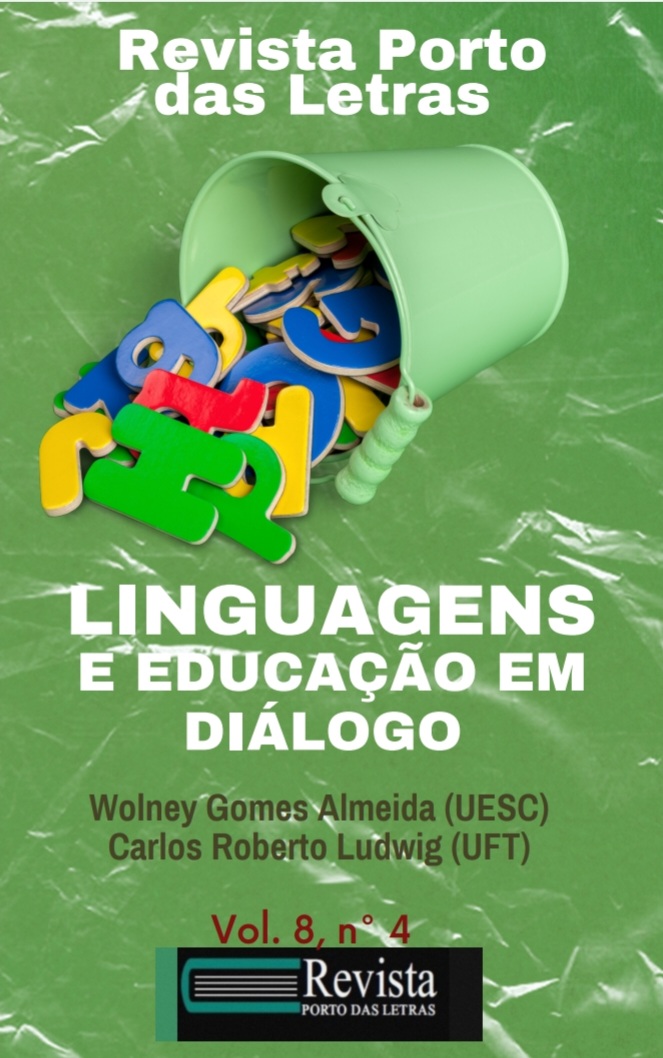“Go, Daughter, Go”
Death and Affective Daily Life in the Short Story “Chamada”, By João Anzanello Carrascoza
Abstract
ABSTRACT: This article presents a critical analysis of the representation of death and its contribution to the construction of everyday affections within the short narrative "Chamada" (2004) by João Anzanello Carrascoza, a Brazilian writer considered one of the great revelations of contemporary fiction. To understand how such processes are represented in the published work, we examine the reasons why the theme of death followed, for a long time, an incipient approach within the juvenile literary subsystem and to what extent Carrascoza's writing provides an opportunity for a new look at this topic. The study demonstrates that youth fiction can be a space less concerned with teaching current values and more interested in awakening children and youth readers to very useful discussions not only about death and affective daily life but about all the dilemmas that surround the human being. Therefore, we resort to studies that bring to the context critical perspectives about children's and youth literature (LIJ) produced in Brazil, such as Ricardo Azevedo (2001), among other scholars and theories that deal with the ways that the representation of death and affection, as themes, occupy the scene of LIJ, as Giorgio Agamben (1999), Philippe Ariès (2012 and 2014) and Miguel Conde (2021).
KEYWORDS: Children's and youth literature; Death; Affection; João Anzanello Carrascoza.
References
AGUIAR, Vera Teixeira de. A morte na literatura: da tradição ao mundo infantil. In: AGUIAR, Vera Teixeira de; CECCANTINI, João Luís; MARTHA, Alice Áurea Penteado (orgs.). Heróis contra a parede. São Paulo: Cultura Acadêmica; Assis: ANEP, 2010. P. 23- 42.
ARIÈS, Philippe. História social da criança e da família. 2ed. reimpr. Tradução: Dora Flaksman. Rio de Janeiro: LTC, 2012.
ARIÈS, Philippe. O homem diante da Morte. Tradução: Luiza Ribeiro. São Paulo: Editora Unesp, 2014.
ASSMANN, Aleida. Espaços da recordação: formas e transformações da memória cultural. Trad. Paulo Soethe (coord.). Campinas: Ed. da Unicamp, 2011.
AZEVEDO, Ricardo. Literatura infantil: origens, visões da infância e certos traços populares. Cadernos do Aplicação. Volume 14 Número ½. Universidade Federal do Rio Grande do Sul, Jan/Fev 2001. Disponível em: http://www.ricardoazevedo.com.br/wp/wp-content/uploads/Literatura-infantil.pdf. Acesso em 15 de julho de 2021.
AZEVEDO, Ricardo. A literatura, o chamado “universo infantil” e a vida mesmo. Biblioteca Nacional – Proler, 2001. Disponível em: http://www.ricardoazevedo.com.br/wp/wp-content/uploads/Literatura-infantil.pdf. Acesso em 15 de julho de 2021.
AZZI, Júlia. Entre a poesia da escuta e o cotidiano afetivo: as temáticas essenciais na prosa de João Anzanello Carrascoza. Macabéa – Revista Eletrônica do Netlli | V.9., N.3., JUL.-SET.2020, p. 179-193.
BADINTER, Elisabeth. Um amor conquistado: o mito do amor materno. Tradução: Waltensir Dutra. Rio de Janeiro: Nova Fronteira, 1985.
CARRASCOZA, João Anzanello. Dias raros. São Paulo: Planeta, 2004.
CONDE, Miguel. A escrita comovida de João Anzanello Carrascoza. Estudos de Literatura Brasileira Contemporânea, no 34, 2009. Disponível em: https://periodicos.unb.br/index.php/estudos/article/view/9643. Acesso em 20 de julho de 2021.
HILST, Hilda. Da morte. Odes mínimas. São Paulo: Globo, 2003. p. 57.
NORBERT, Elias. A solidão dos moribundos: seguido de “envelhecer e morrer”. Tradução: Plínio Dentzien. – Rio de Janeiro: Jorge Zahar Ed., 2001.
PAULA, Fernanda Pires de. Porque de tânatos também se faz a adolescência: representação literária da morte em obras juvenis brasileiras contemporâneas. Dissertação (mestrado) – Universidade Federal de Goiás, Unidade Acadêmica especial de Letras e Linguística, Catalão, Programa de Pós-graduação em Estudos da linguagem. Catalão, 2016. 106 p.
SILVA, Vera Maria Tietzman. Literatura infantil brasileira: um guia para professores e promotores de leitura. Goiânia: Cânone Editorial, 2008, 272 p.
TIBURI, Márcia. Branca de Neve ou Corpo, lar e campo de concentração: as mulheres e a questão biopolítica. In: TIBURI, Márcia; VALLE, Bárbara. (Org.). Mulheres, filosofia ou coisas do gênero. Santa Cruz do Sul: EDUNISC, 2008. p. 53-73.
Downloads
Published
How to Cite
Issue
Section
License
Os autores concordam com os termos da Declaração de Direito Autoral, que se aplicará a esta submissão caso seja publicada nesta revista (comentários ao editor podem ser incluídos a seguir).

